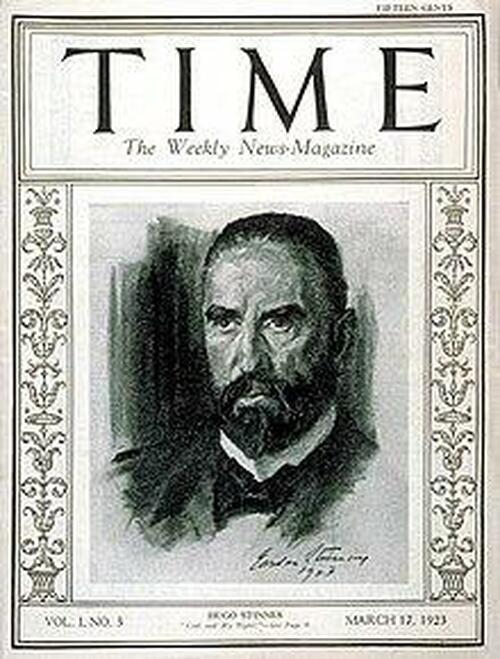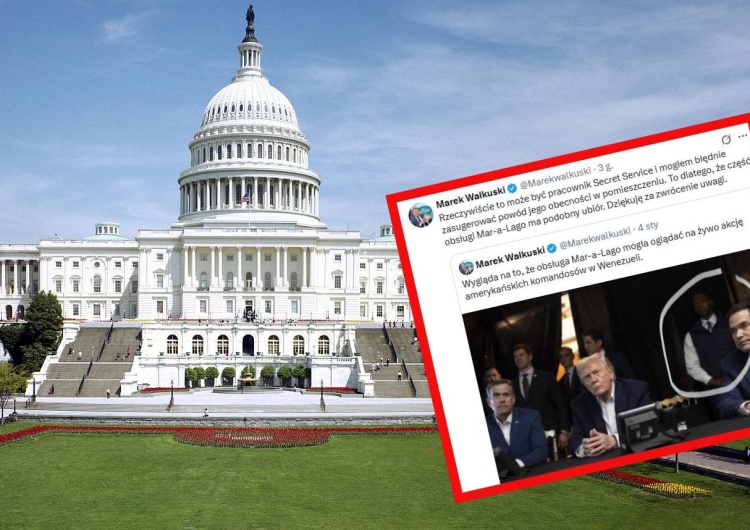
What Would Hugo Do?
Authored by MN Gordon via EconomicPrism.com,
“The wavelike movement affecting the economic system, the recurrence of periods of boom which are followed by periods of depression, is the unavoidable outcome of the attempts, repeated again and again, to lower the gross market rate of interest by means of credit expansion. There is no means of avoiding the final collapse of a boom brought about by credit expansion. The alternative is only whether the crisis should come sooner as the result of a voluntary abandonment of further credit expansion, or later as a final and total catastrophe of the currency system involved.”
– Ludwig von Mises, Human Action
Crank Up the Printing Press
Fed rate cuts are coming. If you believe this will levitate your stock portfolio, you are in for a big disappointment.
The forthcoming collapse on Wall Street can be seen a country mile away. But only by those with their eyes open.
Extreme stock market valuations. Sky high prices. An AI bubble that is running out of greater fools. All the while, the economy is slipping into recession.
These factors, coupled with a behemoth government debt problem, are aligning for something much more than a run-of-the-mill bear market. By our estimation a 50 percent top to bottom decline in the S&P 500 will be the minimum. Practically speaking, if the stock market goes down by 50 percent, then up by 50 percent, you have not broken even.
When the economy contracts in earnest and stocks slip and slide, the Treasury, in concert with the Federal Reserve, will once again crank up the printing press. In fact, the Fed is already oiling the gears in preparation for a 25-basis point rate cut later this month.
Yet dollar debasement can only go so far. According to the Bureau of Labor Statics own inflation calculator, $1 today has the purchasing power that $0.03 had in 1913 – the year the Federal Reserve came into existence. The dollar’s value has almost been completely destroyed over the last 111 years. Workers and savers have been on the hook for this via the inflation tax.
Thus, the looming recession and stock market decline could be followed by a debt crisis and dollar crisis. At that point, inflation will run amok – debasing both the dollar and society as a whole.
Money Supply Inflation
This is a tale that is repeated from time to time. Overindebted governments, relying on over issuances of money and credit, destroy their currency and economy. Revolutionary France. Weimar Germany. 21st Century Zimbabwe. And everything in between.
Intense money printing ruins the currency, which forces relative prices higher. Ultimately the inflation turns hyper, where monthly inflation rates exceed 50 percent. Societal chaos and human suffering then follow a similar trajectory.
The U.S., regrettably, is traversing a similar path as that which has resulted in disaster for other countries. Out of control spending. Authoritarian government. Extreme wealth disparity. Burgeoning social discord and discontent. The U.S. isn’t somehow immune to a similar inflation disaster; it won’t be different, this time.
Some aspects, of course, will be different. Rather than issuing higher and higher denominations of paper notes as has occurred during past episodes of hyperinflation, the Treasury and the Fed will merely flood the system with cheap credit. The devaluation will make carrying cash impractical – it already has.
Zeroes will be added to the back of both consumer prices and credit card limits. Then, as a solution to the inflation of its own making, the Fed will roll out a digital federal reserve note. And from then on, all private transactions will be subject to government oversight.
For American’s trying to work, save, invest, and improve the lives and security of their families, we’ve entered a dangerous territory. To head off the fate of inflationary madness, Congress needs to simply do one thing. Stop spending, balance the budget, run a surplus, pay down the debt, and suffer the consequences of a multi-decade depression, as the debt is paid down or written off.
We don’t believe there’s a snowball’s chance in hell this will happen. The track record of the U.S. government since the close of the Great Depression has been one of money supply inflation. The consequences of this will come to a head during the next presidency.
Germany’s Evil Genius
Hyperinflation, in the simplest sense, causes the currency to become effectively worthless. For example, in Weimar Germany most people were utterly destroyed by the hyperinflation. Responsible people were punished for saving money.
Wage earners received worthless notes for their labor. Before the hyperinflation was over the only redeeming value of stacks of money was its use as fire kindling.
But not everyone was destroyed by the Weimar hyperinflation. Some people prospered to the extreme.

One of those people was a man named Hugo Stinnes.
What’s interesting about Hugo Stinnes is that while most people were wiped out by the hyperinflation, his wealth grew and grew. It grew so much that he became the richest man in Germany and earned the moniker the ‘inflation king.’
He was also called Germany’s evil genius.
The important thing to understand about Stinnes’ enormous wealth is that it wasn’t so much the result of what he did during the hyperinflation. But what he did just prior.
Stinnes was born in Germany in 1870. He was already rich long before 1920. His family owned a coal mine and other industrial interests.
Still, Stinnes was a shrewd economic observer and experienced with international trade. Seeing the excesses of Reichsbank president, Rudolf von Havenstein’s money printing already working its way through the economy following World War I, he loaded up on steel, shipping, railroad, and cargo lines. What’s more, he borrowed heavily to pay for everything.
While the value of the Papermark gradually eroded following WWI. It didn’t really start to lose value until 1921. After that, its loss of value got exponentially worse. Stinnes used the gradual period to prepare.
Lessons from the Past
Overall, Stinnes’ hyperinflation playbook was generally straight forward. He used debt to load up on hard assets prior to the hyperinflation. Then, after the hyperinflation, his hard assets retained their value, in real terms, while their price shot through the roof in nominal terms (relative to the currency).
What this meant is that the debts he owed in terms of the Papermark he borrowed in dropped to the point of being insignificant. Hence, he was able to pay off his debts for practically nothing while retaining his hard assets and becoming filthy rich.
When the hyperinflation hit, the value of the Papermark money he borrowed was worth less and less and the hard assets he owned all increased in value, relative to the declining German currency. The important lesson is that hard assets don’t lose their value during hyperinflation the same way that the currency does.
On the one hand, Stinnes’ hard assets were increasing in value relative to the Papermark while producing output of real value. Simultaneously, the hyperinflation of the Papermark was decreasing the value of his Papermark debts.
By 1924, Stinnes was able to pay off his debt with worthless Papermarks. At the same time, his assets had ballooned in value relative to the Papermark. Thus, making Stinnes the richest man in Germany.
Then, as fate would have it, Stinnes abruptly died in Berlin on April 10, 1924, as a result of a gall bladder operation.
Here in the USA, in September 2024, we see signs of government induced hyperinflation on the horizon. But, in between, are dark clouds.
What Would Hugo Do?
The Fed, after hiking and holding the federal funds rates at a range of 5.25 to 5.5 percent since July 27, 2023, has temporarily taken its monetary gas out of the economy. The lag in the policy adjustments to when they filter through the economy are finally being realized – the economy is slowing.
While rate cuts will come later this month, there will, again, be a lag before their inflationary effects manifest. This lag will be in the form of a recession and a declining stock market. With this backdrop, if Hugo Stinnes were alive today, what would he do?
We suppose he would do what billionaire investor Warren Buffett is doing.
Buffett, like Stinnes, owns railroads and other businesses that offer high return on tangible capital. But unlike Stinnes, Buffett is not loaded up with debt.
On the contrary, Buffett, through his company Berkshire Hathaway, has been selling stocks and building cash all year. As of June 30, the most recent period reported, Buffett is sitting on a $277 billion pile of cash.
This contrast illustrates the difference between Fed Chair Jerome Powell today and Reichsbank president Rudolf von Havenstein circa 1921. Powell understands the need for the economy to stall out before resuming the next great wave of money printing where Havenstein didn’t.
Extreme inflation may be coming to the USA. But investors and speculators who wish to game it like Stinnes did over 100 years ago, by borrowing money to buy assets, are asking for trouble. Like Buffett, we anticipate there will first be a shakeout.
Now is not the time to buy stocks on margin. You’ll get wiped out.
Instead, as a little guy investor looking to protect his hard-earned grubstake, you want to own hard assets and shares of good businesses with a high return on tangible capital.
You also want to hold some cash and prepare yourself psychologically, so you have the gumption to deploy it when there’s blood in the streets.
* * *
[Have you ever heard of Henry Ford’s dream city of the South? Chances are you haven’t. That’s why I’ve recently published an important special report called, “Utility Payment Wealth – Profit from Henry Ford’s Dream City Business Model.” If discovering how this little-known aspect of American history can make you rich is of interest to you, then I encourage you to pick up a copy. It will cost you less than a penny.]
Tyler Durden
Sat, 09/14/2024 – 09:20

 1 rok temu
1 rok temu













